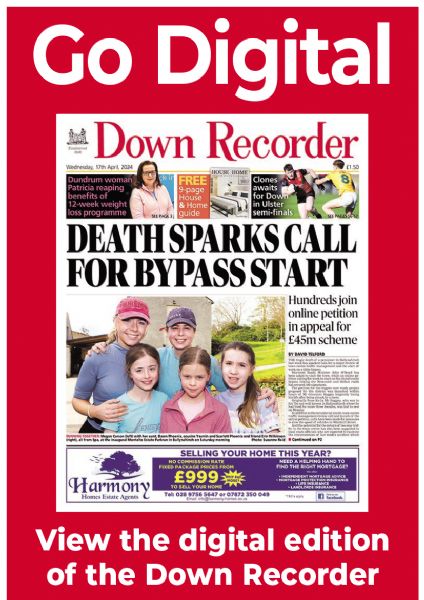From lepers to feeding bottles
From lepers to feeding bottles
29 February 2012 - by CIARA COLHOUN
AN intriguing exhibition giving a glimpse into the history of local medical care has opened at Down County Museum.
Doctors Orders: The Story of Health and Medicine in County Down documents the development of local health care, which began with the formation of St. Nicholas’ Leper Hospital on the outskirts of Downpatrick in the 12th century.
The exhibition also unveils details of the Down County Infirmary, which was established at Saul Street in 1767.
Although the beginnings of the local health system are interesting, it is the more recent history that is likely to resonate with visitors to the exhibition.
This may be particularly true for hundreds of local women treated by the affable Dr. Lawrence Erskine during his 20-year spell as consultant obstetrician and gynaecologist in Downpatrick.
Dr. Erskine, who retired in 2008, has a fascinating collection of surgical instruments, which he has lent to the museum for the exhibition, which includes a pair of 19th century obstetric forceps, a tonsil guillotine and a special saw used for cutting through the skull.
Another section of the exhibition will also intrigue local mothers, who may have given birth in the Hardy Greer Hospital in Downpatrick, many of them under the care of Sister Grant. Feeding bottles and various other baby items taken from the hospital are included in a special display cabinet and are bound to reawaken memories for many visitors.
Miss Emily McCurry, who came to the Crossgar area as a district nurse in 1944, has her own display cabinet in the exhibition with materials collected during her 29 years of local service. This includes a starched linen uniform and her hat with epaulettes.
Doctors Orders: The Story of Health and Medicine in County Down was launched last week and is now open for free viewing at Down Museum.
Down Council vice-chairman, Mr. Liam Johnston, opened the exhibition, which he said “told the story of a long tradition of caring in the district.”
The exhibition will be open at the museum for the rest of the year.

